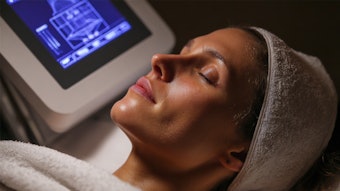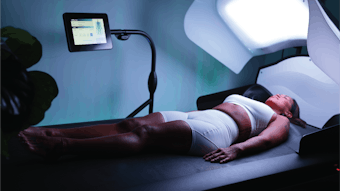
Spa and wellness professionals are indeed the problem kids when it comes to putting on their own oxygen mask first, and with the line between work and life becoming even more muddled, it's important we take the time to re-visit the matter of workplace wellness. The pandemic softened formerly rigid work arrangements, and culturally, we've become a lot more cognizant of our mental health as well—with workplace stress being one of the leading stressors contributing to poor mental health.
This article is only available to registered users.
Log In to View the Full Article
Spa and wellness professionals are indeed the problem kids when it comes to putting on their own oxygen mask first, and with the line between work and life becoming even more muddled, it's important we take the time to re-visit the matter of workplace wellness. The pandemic softened formerly rigid work arrangements, and culturally, we've become a lot more cognizant of our mental health as well—with workplace stress being one of the leading stressors contributing to poor mental health.
Here to give us insight on keeping well while at work is Beata Aleksandrowicz (BA), an internationally recognized expert on massage and women's health.
Skin Inc. (SI): How do you think attitudes towards workplace wellness have shifted, and what do you think drives this change?
BA: After working in the industry for almost thirty years, I have witnessed a significant cultural and strategic shift in approaches to wellness. It continues to evolve from traditional wellness programs offered to employees that are primarily focused on physical health, such as gym memberships or annual check-ups.
Instead, we've moved to a much broader understanding of wellness including mental health, emotional well-being, work-life balance and the overall employee experience. This shift stems from a much greater awareness of mental health and a growing recognition that psychological well-being is just as important as physical health. Employers are now more proactive in supporting mental health through flexible working conditions, mental health days and access to counseling.
Another important factor is that millennials and Gen Z employees place a high value on holistic wellness and expect their employers to support a healthy work-life balance. We also need to take into consideration how the Covid pandemic dramatically highlighted the importance of employee wellbeing. We have at our disposal the results of much research and data confirming that the focus on employee wellness can reduce absenteeism, improve engagement and boost productivity. I think it is also important to mention that society at large is becoming more health-conscious and open to conversations about mental and emotional well-being.
SI: What specific obstacles do spa and wellness professionals encounter that might require them to take special wellness measures?
BA: Spa and wellness professionals work in environments that are focused on helping others feel better, but this can come at the cost of their well-being. Constantly caring for others—whether through massage therapy, beauty treatments or holistic wellness services—takes its toll. Additionally, the physical demands of the job, including repetitive movements and long hours on their feet can be emotionally draining, and lead to emotional and physical burnout. Clients often expect immediate results and personalized attention, which requires spa professionals to be emotionally present, calm and supportive. Irregular and long working hours, including evenings and weekends, contribute to the lack of time for self-care. On top of that, job insecurity, financial pressure and limited access to resources such as employee assistance programs or mental health services contribute to stress. This lack of support is difficult to comprehend when wellness professionals play such an important role in the health and well-being of society as a whole.
Measures encouraging wellness professionals to learn how to prioritize their physical, mental, emotional and spiritual health can help address some of these challenges. Employers need to offer regular supervision, structured rest periods, mental health check-ins and physical therapy, including ergonomic support. I can't overstate the importance of creating opportunities for ongoing professional development that focus on self-care.
SI: How can spa owners empower their staff to keep well? What about their work environment can be better made conducive to wellness?
BA: There's still not enough understanding about how to maintain a healthy, efficient team, especially for spa managers. There is so much that can be done through daily practices and long-term culture building that promotes self-care.
Encouraging open communication about stress and well-being, providing wellness training, allowing regular breaks, offering flexible schedules and recognizing and appreciating staff efforts should be at the base of a successful spa. Incorporate ergonomically supportive equipment, dedicated staff relaxation areas, access to healthy food and drinks and calm, well-designed spaces that support both clients and staff. The paramount, in my opinion, should be clear work boundaries to prevent burnout and a strong team culture to foster connection and resilience.
SI: How does workplace wellness impact client relationships?
BA: Based on my observations and experience, I am convinced that when staff feel well-supported, energized and valued, it positively affects how they show up for clients. Wellness-focused staff are more present, patient and engaged. This leads to higher-quality interactions, better listening and more personalized, consistent service. Staff who feel respected and empowered are more likely to uphold high standards, communicate effectively and go the extra mile—resulting in better overall satisfaction.
Clients can sense the overall mood of a space and if an environment is calm and welcoming, they are more likely to return feeling genuine connection with the staff.
In essence, taking care of your team is taking care of your clients. A healthy team is the foundation for healthy, lasting client relationships.
SI: What would you say to those wary about the potential time/financial investment that might come with prioritizing workplace wellness?
BA: It’s completely understandable to have concerns about the time and financial commitment of wellness initiatives. However, it’s really important to view wellness not as a cost, but as an investment in the long-term health of your business.
Supporting staff well-being leads to higher retention, and we all know the cost of recruiting and training new employees. It can easily far exceed the cost of wellness efforts. A well-supported team is more engaged, efficient and motivated, saving time and driving better outcomes per shift or treatment session. Even small but consistent wellness efforts can prevent stress related to absence and last-minute disruptions. It promotes steady and healthy spa operations that create positive client experiences hence directly impacting repeat business, reviews and referrals. Wellness doesn’t have to be expensive. Many impactful changes—like flexible scheduling, break policies or recognition programs—cost little to implement. Wellness is more about culture and consistency than big budgets. It’s not about doing more, it’s about doing what matters most, better.
SI: What are some easy first steps estheticians can take to prioritize their wellness, assuming they don’t know where to start and don’t have a ton of resources at their disposal?
BA: Great question! I would like to say first that you don’t need a big budget or lots of free time to start taking care of your well-being. Small, intentional changes can have a big impact. Here are some realistic, low-cost first steps that I would recommend. Protect your body daily—stretch before and after shift to reduce tension and prevent repetitive strain. Adjust your posture regularly during treatments. Invest in supportive shoes or cushion floor mats to ease foot and back strain. Take short breaks between clients to hydrate, breathe deeply and reset your energy. Please remember that even two minutes of pause for mindfulness or quiet can reduce the stress that builds up over the day. Avoid, if possible, overbooking yourself. Learn to say no to extra clients when you feel depleted. Fuel your body well by nurturing your body with healthy snacks and water during the day. Make quality sleep a non-negotiable, understanding that it’s your body’s time to repair and recharge. Connect with work colleagues. Sharing challenges and tips can be emotionally grounding and empowering. Schedule your massage, facial or quiet time. Even every month, these can make a difference. Treat yourself as your client. You deserve the same care that you give to others. Please remember that wellness doesn't have to be big or perfect. The most important is consistency. Start small, stay kind to yourself and build from there
SI: How should spas and staff reconcile general wellness practices with their own individual needs? What could this look like?
BA: I believe that fostering flexibility and open communication is key to spa success in blending collective wellness practices with individual staff needs. Businesses should tailor wellness programs to individual preferences. For example, some may prefer group activities like yoga, while others might need solo moments of rest or relaxation. Finding out these individual preferences requires staff to share their personal wellness choices and needs through regular communication. Diversity in building wellness programs is another key to success. Blending and alternating different wellness activities such as yoga, breathing sessions, mindfulness and chanting can have a big appeal to the staff, and encourage each of them to develop routines that can keep them safe, healthy and thriving in their profession.










